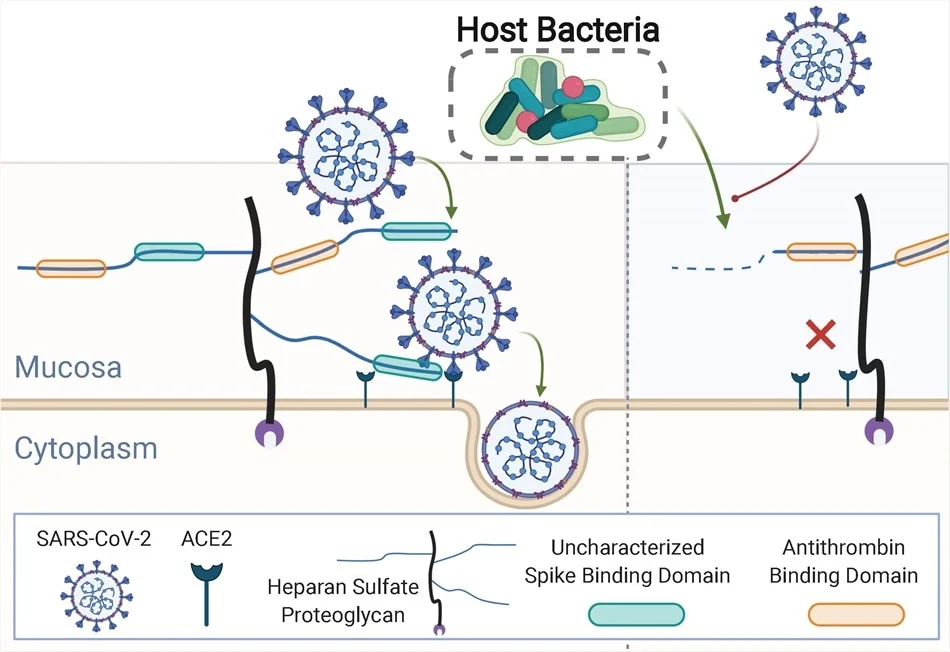These microbiome differences may help to explain why older individuals and men are more susceptible to developing coronavirus disease 19 (COVID-19), compared with younger individuals and women, says the team.
Rob Knight (University of California, San Diego) and colleagues say the study provides evidence that the human microbiome mediates the infectivity of SARS-CoV-2 by modifying a thick layer surrounding the host plasma membrane called the glycocalyx.
The researchers suggest that understanding shifts in the composition of host-microbial communities could help to improve the risk stratification of patients and potential approaches to prevention and treatment.
More about the glycocalyx
The glycocalyx is made up of a rich network of glycans and glycoconjugates that many viral pathogens bind to in order to pass through the protective glycocalyx layer and attach to protein receptors on the host cell plasma membrane.
In the case of SARS-CoV-2, a viral surface protein called “spike” targets a glycosaminoglycan (GAG) called heparan sulfate (HS). The virus requires attachment to HS in order to bind the host cell surface receptor angiotensin-converting enzyme 2 (ACE2), which enables viral membrane adhesion and host cell entry.
What did the researchers do?
Several bacterial taxa are known to produce enzymes that modify certain types of GAG, including HS, and much research into GAGs has been advanced by using purified bacterial enzymes.
Now, Knight and colleagues have developed a computational model of HS catabolism to assess the ability of human microbes to degrade HS.
The team found that the genomes of common human-associated commensal bacteria encoded enzymes that degrade HS.
The presence of these HS-modifying bacteria was lower in bronchoalveolar lavage fluid (BALF) samples taken from patients with COVID-19 than among samples taken from healthy controls.
The researchers also found that in two independent gut microbiome datasets, levels of HS-modifying bacteria were reduced with increasing age and enhanced in females compared with males.
Older age and male gender are both known unmodifiable risk factors for developing COVID-19 following SARS-CoV-2 infection, and this finding may help to explain this increased susceptibility, says the team.




